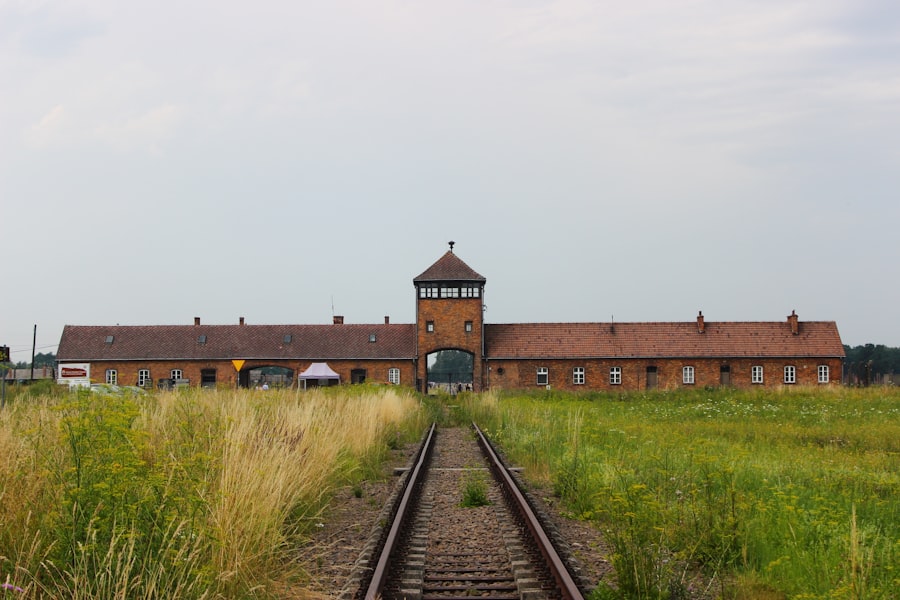Operation Valkyrie stands as one of the most audacious attempts to eliminate Adolf Hitler during World War
Conceived by a group of German military officers and civilians disillusioned with the Nazi regime, the plan aimed to assassinate Hitler and subsequently use the existing reserve army to take control of the government. The conspirators believed that by removing Hitler, they could negotiate a peace settlement with the Allies and save Germany from further destruction. The plot culminated on July 20, 1944, when Colonel Claus von Stauffenberg, one of the key figures in the conspiracy, managed to plant a bomb in Hitler’s conference room at the Wolf’s Lair in East Prussia.
Despite the meticulous planning, the assassination attempt failed. The bomb detonated, but Hitler survived with only minor injuries, thanks in part to the positioning of the briefcase that contained the explosive device. In the aftermath, the conspirators were swiftly arrested, and many were executed in a brutal crackdown.
The failure of Operation Valkyrie not only solidified Hitler’s grip on power but also led to a wave of paranoia within the Nazi leadership, resulting in further purges and a tightening of control over the German military and society.
Key Takeaways
- Operation Valkyrie: The failed plot to assassinate Hitler was a significant but unsuccessful attempt to overthrow the Nazi regime from within.
- The Enigma Machine: Breaking the code of the Enigma machine was a crucial turning point in World War II, allowing the Allies to intercept and decipher German communications.
- The Missing Amber Room: The priceless treasure of the Amber Room remains lost, sparking intrigue and speculation about its whereabouts.
- The Ghost Army: Deception and infiltration tactics used by the Ghost Army played a crucial role in misleading and confusing the enemy during World War II.
- The Lebensborn Program: The Nazi eugenics program known as Lebensborn exposed the dark and inhumane practices of the regime, leaving a lasting impact on history.
The Enigma Machine: Breaking the Code

The Enigma machine was a sophisticated cipher device used by the German military to encrypt messages during World War
Its complexity made it seem unbreakable, and for a time, it provided the Nazis with a significant advantage in communications security. However, Allied cryptanalysts, particularly those at Bletchley Park in England, dedicated themselves to cracking the Enigma code. Led by figures such as Alan Turing, these codebreakers employed innovative techniques and early computing technology to decipher intercepted messages.
| Key Points | Details |
|---|---|
| Complexity of Enigma | Made it seem unbreakable |
| Nazi Advantage | Significant advantage in communications security |
| Allied Cryptanalysts | Dedicated themselves to cracking the Enigma code |
| Bletchley Park | Location of Allied codebreakers, particularly those led by Alan Turing |
| Techniques Used | Innovative techniques and early computing technology |
| Outcome | Deciphered intercepted messages, providing crucial intelligence to the Allies |
The successful decryption of Enigma-encrypted communications had profound implications for the war effort. It allowed the Allies to anticipate German military movements and strategies, contributing to significant victories such as the Battle of El Alamein and the D-Day invasion. The intelligence gathered from breaking the Enigma code was instrumental in turning the tide against Nazi Germany, demonstrating how critical information warfare can be in modern conflict.
The story of the Enigma machine is not just one of technological ingenuity; it also highlights the importance of collaboration and perseverance in overcoming seemingly insurmountable challenges.
The Missing Amber Room: A Priceless Treasure Lost
The Amber Room, often referred to as the “Eighth Wonder of the World,” was a magnificent chamber decorated with amber panels, gold leaf, and mirrors. Originally constructed in the 18th century in Russia, it was considered one of the most exquisite examples of baroque art. However, during World War II, the Nazis invaded the Soviet Union and seized control of St.
Petersburg, where the Amber Room was housed. They dismantled this priceless treasure and transported it to Germany, where its whereabouts became shrouded in mystery. Despite numerous efforts to locate and recover the Amber Room after the war, it remains lost to this day.
Various theories have emerged regarding its fate; some believe it was destroyed during air raids, while others speculate that it may still be hidden in a secret location. The quest for the Amber Room has captivated treasure hunters and historians alike, symbolizing not only the loss of cultural heritage during wartime but also the enduring human desire to reclaim what has been lost. The story of this remarkable room serves as a poignant reminder of how art and history can be irrevocably altered by conflict.
The Ghost Army: Deception and Infiltration

The Ghost Army was a unique unit within the United States Army during World War II, officially known as the 23rd Headquarters Special Troops. This unit specialized in deception tactics designed to mislead and confuse enemy forces. Comprised of artists, sound engineers, and other creative professionals, they employed inflatable tanks, sound effects, and fake radio transmissions to create illusions of large troop movements and military installations.
Their operations were crucial in diverting German attention away from actual Allied positions. One of their most notable missions took place during the invasion of Normandy when they successfully deceived German forces into believing that a massive Allied army was poised to attack at a different location than where the real invasion was occurring. This clever use of deception not only saved countless lives but also showcased the power of creativity in warfare.
The Ghost Army’s legacy is a testament to how innovative strategies can alter the course of history, proving that sometimes perception can be just as powerful as reality on the battlefield.
The Lebensborn Program: Nazi Eugenics Exposed
The Lebensborn program was an initiative established by Heinrich Himmler and the SS aimed at promoting Aryan racial purity through selective breeding. This controversial program sought to increase the birth rate of “racially pure” Germans by encouraging SS members to father children with women deemed racially suitable. Lebensborn homes were established across Germany and occupied territories to provide care for these mothers and their children.
The program reflected the extreme ideologies underpinning Nazi beliefs about race and eugenics. While initially presented as a means to strengthen the Aryan population, the Lebensborn program was steeped in ethical violations and human rights abuses. Many children born through this program were forcibly taken from their mothers or subjected to rigorous indoctrination into Nazi ideology.
After the war, survivors faced significant challenges reintegrating into society due to their association with a regime that had committed horrific atrocities. The legacy of Lebensborn serves as a chilling reminder of how ideology can lead to dehumanization and exploitation under totalitarian regimes.
The Hunt for Nazi Gold: Hidden Fortunes
The hunt for Nazi gold has become a captivating narrative intertwined with tales of adventure and intrigue following World War
As Allied forces advanced into Germany, they discovered vast caches of wealth amassed by the Nazi regime through looting, theft, and exploitation. This treasure included gold bars, jewelry, art pieces, and other valuables that had been stolen from Jewish families and occupied nations. However, much of this wealth vanished in the chaos of war or was hidden away by fleeing Nazis.
Various treasure hunters and historians have embarked on quests to locate these hidden fortunes over the decades since the war’s end.
Others speculate that some treasures may have been smuggled out of Germany before Allied forces could seize them.
The allure of Nazi gold continues to capture public imagination, serving as both a symbol of greed and a reminder of the immense suffering caused by war.
The V-2 Rocket: Germany’s Secret Weapon
The V-2 rocket represented a significant leap forward in military technology during World War
Developed by German engineer Wernher von Braun and his team at Peenemünde, it was the world’s first long-range guided ballistic missile. The V-2 was designed to strike targets far behind enemy lines with unprecedented speed and precision. Its introduction marked a new era in warfare, showcasing how technological advancements could alter military strategies.
Despite its innovative design, the V-2 program faced numerous challenges, including resource shortages and Allied bombings that disrupted production facilities. Nevertheless, thousands of V-2 rockets were launched against cities such as London and Antwerp, causing widespread destruction and civilian casualties.
The legacy of the V-2 rocket is complex; it symbolizes both human ingenuity and the devastating consequences of its application in warfare.
The Bunker at Wolf’s Lair: Hitler’s Last Stand
The Wolf’s Lair served as Adolf Hitler’s primary military headquarters during much of World War
As the war turned against Germany in 1944-1945, Hitler’s reliance on his bunker increased. The Wolf’s Lair became a symbol of his isolation and paranoia as he withdrew further from reality while surrounded by loyalists who reinforced his delusions about victory. Following his suicide in April 1945, Soviet forces captured the site, which was subsequently destroyed by retreating German troops to prevent it from falling into enemy hands.
Today, remnants of the Wolf’s Lair serve as a historical site that reflects both Hitler’s ambitions and his ultimate downfall.
The Ratlines: Escaping Nazi War Criminals
In the aftermath of World War II, many high-ranking Nazi officials sought refuge from justice through clandestine escape routes known as “ratlines.” These networks facilitated their flight from Europe to countries such as Argentina, Brazil, and Chile, where they hoped to evade capture by Allied forces or war crimes tribunals. Some ratlines were organized by sympathetic clergy or former SS members who provided false identities and safe passage for fleeing Nazis. The existence of ratlines highlights not only the complexities surrounding post-war justice but also how certain individuals were able to evade accountability for their actions during the Holocaust and other atrocities committed under Nazi rule.
Over time, some escaped war criminals managed to live relatively normal lives while others faced eventual capture or exposure due to investigative journalism or international efforts to bring them to justice. The legacy of these ratlines serves as a reminder that accountability for war crimes remains an ongoing struggle even decades after conflicts have ended.
The Monuments Men: Rescuing Stolen Art
The Monuments Men were a group of art historians, museum curators, and soldiers tasked with protecting cultural heritage during World War
Their efforts culminated in significant successes; they recovered thousands of artworks that had been taken from Jewish families or national institutions. However, their mission was fraught with challenges as they navigated war-torn landscapes filled with danger and uncertainty. The Monuments Men not only played a crucial role in preserving cultural heritage but also highlighted the importance of art as a reflection of humanity amidst conflict.
Their legacy continues to inspire contemporary efforts aimed at protecting cultural sites around the world.
The Holocaust: Uncovering the Truth and Honoring the Victims
The Holocaust remains one of history’s darkest chapters—a systematic genocide orchestrated by Adolf Hitler’s regime that led to the deaths of six million Jews along with millions of others deemed undesirable by Nazi ideology. Understanding this atrocity is essential for honoring its victims and ensuring that such horrors are never repeated. In recent years, there has been an increased focus on uncovering truths about this period through survivor testimonies, historical research, and educational initiatives aimed at raising awareness about anti-Semitism and intolerance.
Commemorative events such as International Holocaust Remembrance Day serve as poignant reminders of those who suffered unimaginable loss during this time. Museums dedicated to preserving memories—like Yad Vashem in Israel or The United States Holocaust Memorial Museum—play vital roles in educating future generations about these events while fostering dialogue about human rights issues today. By confronting uncomfortable truths about history head-on, society can work towards building a more just world where such atrocities are recognized as unacceptable violations against humanity.
In conclusion, these narratives from World War II reveal not only remarkable stories of courage and resilience but also cautionary tales about human nature when faced with extreme ideologies or conflict-driven circumstances. Each account serves as an important reminder that history must be remembered—not just for its triumphs but also for its tragedies—so that future generations may learn from past mistakes while striving towards peace and understanding among all people.
In recent years, numerous previously classified documents have come to light, shedding new insights into the clandestine operations and hidden agendas of the Nazi regime during World War II. These revelations have sparked renewed interest and research into the era, prompting historians and enthusiasts alike to delve deeper into the secrets of the past. For those interested in exploring more about these intriguing discoveries, an article on In The War Room provides a comprehensive overview of the latest findings and their implications on our understanding of World War II history.
WATCH THIS! 🪖How Stolen Nazis Built Cold War Power
FAQs
What are some of the Nazi secrets revealed from World War II?
Some of the Nazi secrets revealed from World War II include the use of concentration camps for mass extermination, the development of advanced weaponry and technology, and the extent of their espionage and intelligence operations.
How were concentration camps used by the Nazis during World War II?
The Nazis used concentration camps as a means of imprisoning and exterminating millions of people, including Jews, political dissidents, and other targeted groups. The extent of the atrocities committed in these camps was revealed after the war.
What advanced weaponry and technology did the Nazis develop during World War II?
The Nazis developed advanced weaponry and technology during World War II, including the V-2 rocket, jet aircraft, and advanced submarines. These developments were kept secret during the war and revealed after the Nazi regime was defeated.
What were some of the espionage and intelligence operations conducted by the Nazis during World War II?
The Nazis conducted extensive espionage and intelligence operations during World War II, including the use of code-breaking and covert operations. The extent of these operations and the impact they had on the war effort were revealed after the war.




